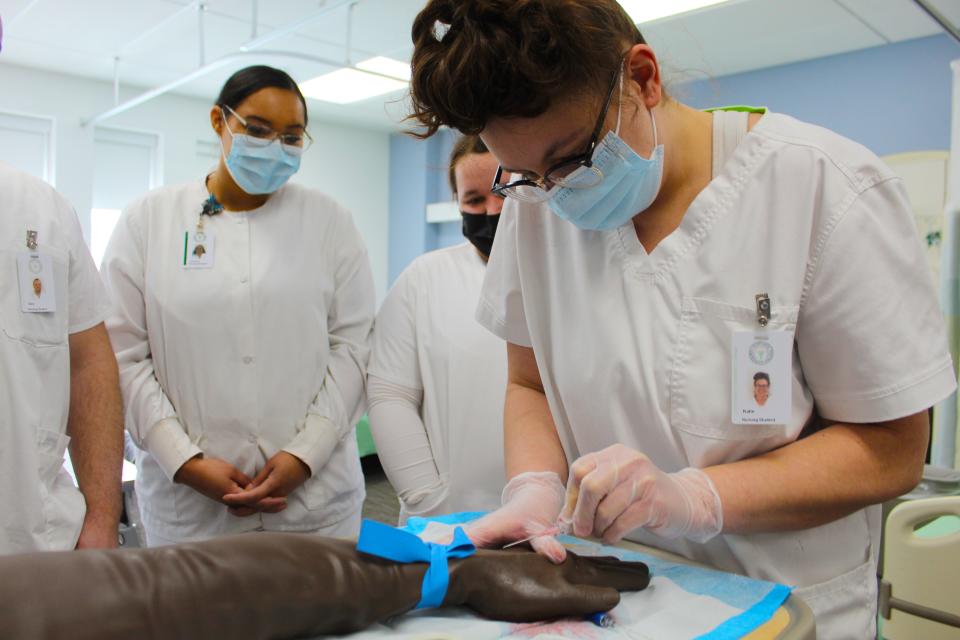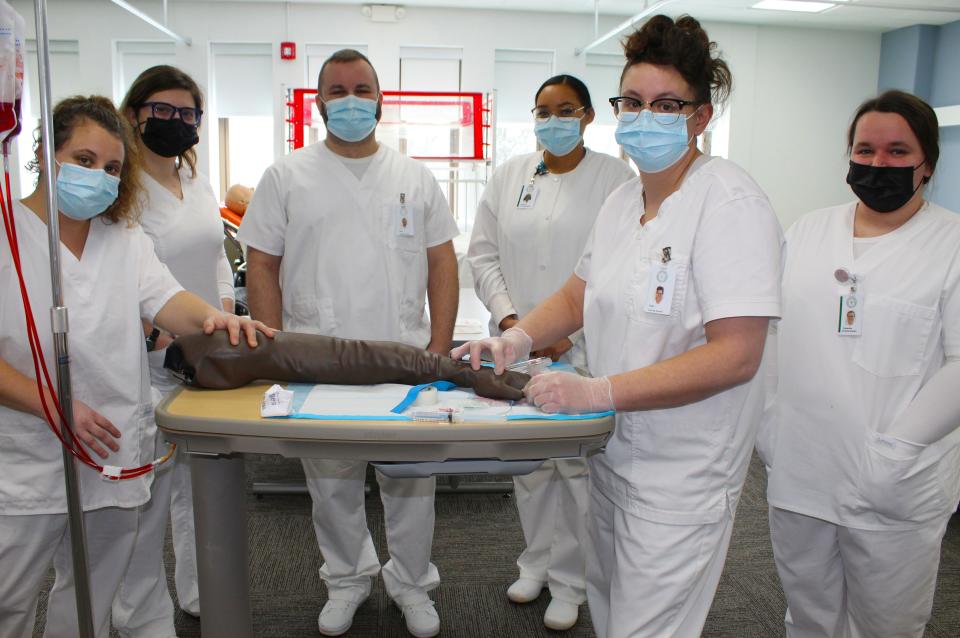Nurse shortage can be offset by long-term dedication, creativity
A nursing shortage in the middle of a pandemic is not good. When COVID-19 swept the country beginning in early 2020, the health profession was hit like many other occupations.
A nursing shortage was predicted, said Deana Sievert, chief nursing officer for ProMedica Health System. Several years ago, National Academy of Medicine published data warning of a coming shortage.
The pandemic expedited the problem.
Baby-boomer nurses were moving toward retirement. Some chose to retire sooner due to pandemic stress, Sievert said. The same data showed 80,000 qualified nursing applicants were turned away because existing programs were full.
There are not enough seats or qualified instructors at the colleges. That's partly because recently, nurses are encouraged to higher education such as master's and doctorate degrees in nursing, especially for educators, she said.
However, the pandemic also slowed college enrollment, said Sara Birch, assistant dean of health sciences at Glen Oaks Community College. The first- and second-year nursing cohorts are not at capacity.
Now, Birch is seeing a definite increase in interest. She is interviewing more than the typical number of nursing applicants for fall semester 2022.
Another problem Birch faced during the pandemic was getting students into clinical rotations. They were not allowed into lockdown facilities and that made it challenging.
Impact of shortage
Local providers said despite the challenges, they witnessed cooperation among staff that included flexibility and, sometimes, long hours.
Tim Stoll, CEO at Thurston Woods Village in Sturgis, said although it has been difficult to hire new nurses, longtime committed nurses have worked diligently throughout the pandemic to ensure quality care for residents.
Shari Ransberger, a registered nurse and vice president of quality/risk management at Sturgis Hospital, agrees.
“I could not be more proud of our staff at Sturgis Hospital,” Ransberger said. “Our nursing staff has worked as a team to tackle our staffing needs by remaining flexible. They pick up shifts for one another and sometimes float to other departments.”
That was also true at Hillsdale Hospital, said Meghan Campbell, chief nursing officer.
Her staff came together to care for patients and to support each other during the difficult time.
Retention and recruitment
Shortages have forced health care providers to get creative, Campbell said.
At Hillsdale Hospital, staff members are rewarded with a resilience bonus later in the year — a thank-you for staying through the challenges.
Career development such as tuition assistance is available for nurses seeking to further their education.
To attract new nurses, there is a tuition-debt option.
ProMedica offers retention and recruitment incentive and has a residency program that allows graduates to learn the ropes in the program of their interest. The goal is for each nurse to find a fit with the team.
Hillsdale Hospital is a private entity with a family/team culture that helps to retain nursing students, Campbell said.
“Nurses see our patients are getting the very best care,” she said. “And knowing you can count on the people around you lightens the load.”
That also is true at Thurston Woods, Stoll said.
“Our wages are competitive, but what usually draws people to work at Thurston Woods is that we are a faith-based organization and people feel called to serve here because of our mission,” he said.
“Nursing is a calling,” Campbell said. “When you love what you are doing, all the hard work feels worth it."


This article originally appeared on Sturgis Journal: The nurse shortage can be offset by dedication and creativity

